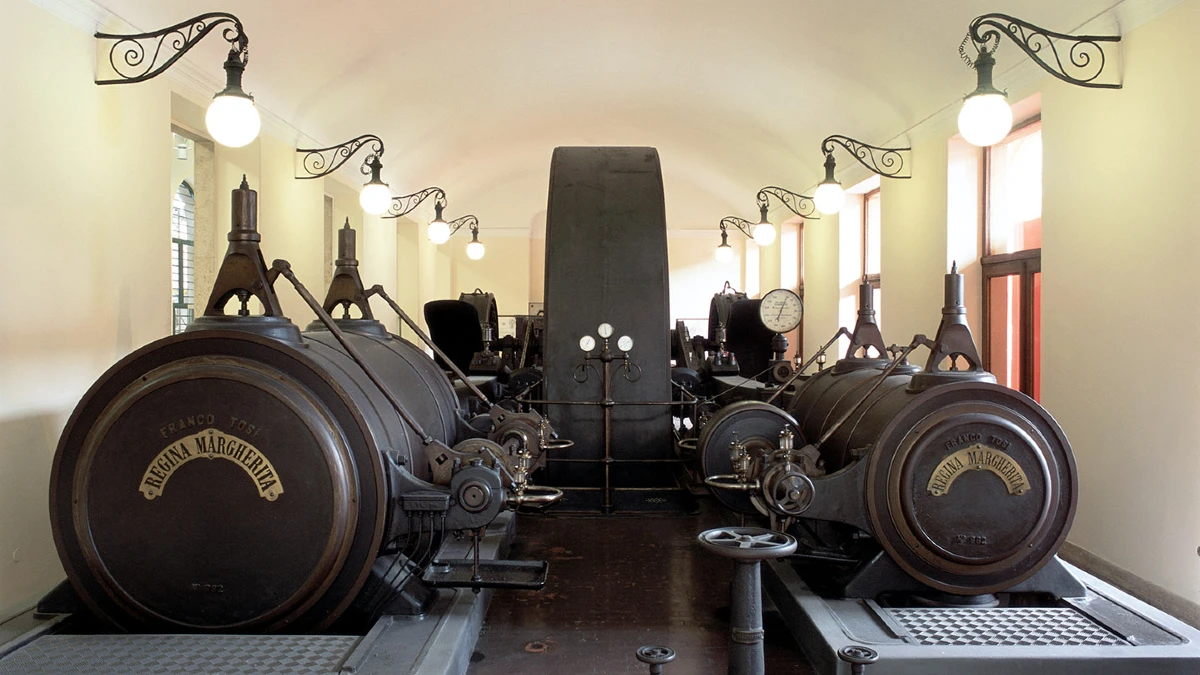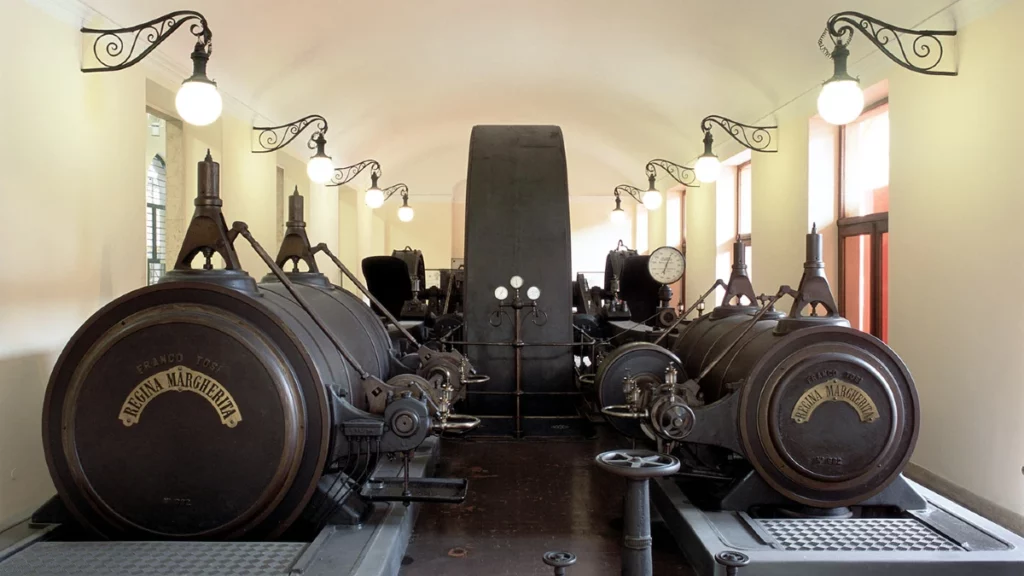
The Leonardo da Vinci National Museum of Science and Technology showcases intriguing exhibits highlighting the past and present of European engineering and science.
Leonardo Science Museum opened its doors in 1953 and is one of Europe’s biggest scientific and technology museums.
It is spread across 50,000 square meters of land and is nestled within the cloisters of a Renaissance monastery.
Both tourists and locals can spend hours exploring the exhibits and learning about physics, engineering, and other subjects at Leonardo da Vinci’s technology museum.
This article shares everything you should know before booking tickets for the Leonardo da Vinci National Museum of Science and Technology.
Table of Contents
What to expect at Leonardo da Vinci Museum
If you want to travel to science and technology’s past, present, and future, visit the Leonardo da Vinci National Museum of Science and Technology.
At Leonardo da Vinci National Museum of Science and Technology, you can expect an immersive display featuring drawings from the final phase of Da Vinci’s career that concludes a journey through the art of war, labor and production, flight, waterways, and architecture.
The perspective on Da Vinci’s influence on Lombard Renaissance painting is also exhibited.
The Leonardo da Vinci National Museum of Science and Technology in Milan is an essential destination for those interested in the history of innovation, technological advancements, and the legacy of one of history’s most influential thinkers, Leonardo da Vinci.
| Tickets | Cost |
|---|---|
| Leonardo da Vinci Museum Entry Tickets | €10 |
| 1.5-Hour Leonardo da Vinci Gallery Tour | €160 (per group up to 15 people) |
Where to book Leonardo da Vinci Museum tickets
You can buy Leonardo da Vinci Science and Technology Museum tickets at the attraction or online.
However, we suggest you book your tickets online as it offers a few benefits.
– You get a discount on booking tickets online, which means you can save money.
– You don’t have to travel to the attraction to buy tickets and sweat yourself standing in long queues.
– You can book your tickets in advance and plan your tour accordingly.
– Sometimes, the tickets get sold out quickly. However, if you purchase tickets online, you can avoid last-minute disappointments.
– You can pick a time slot that works best for you.
How online tickets work
Go to the Museum of Science and Technology Leonardo da Vinci ticket booking page, select your preferred date, time slot, and the number of tickets and buy them right away.
Tickets will be immediately emailed to your registered email address following payment.
There is no need to print the tickets.
On the day of your visit, you must present the saved e-ticket from your smartphone at the entrance gate.
The ticket allows you to skip the queue at the museum entrance in case of large crowds. However, exchanging the voucher at the ticket office is necessary to get the entrance ticket.
Cost of Leonardo da Vinci Museum tickets
Leonardo Da Vinci Museum tickets cost €10 for all visitors aged 27 to 64.
Young visitors aged 18 to 26 and children aged 3 to 17 get a €2.5 discount and pay only €7.50.
Tickets for seniors over 65 years are also priced at €7.50.
Infants up to 2 years can enter the museum for free.
Tickets for the 1.5-Hour Leonardo da Vinci Gallery Tour are priced at €160 for all participants (up to 15 people).
Leonardo da Vinci Museum entry tickets
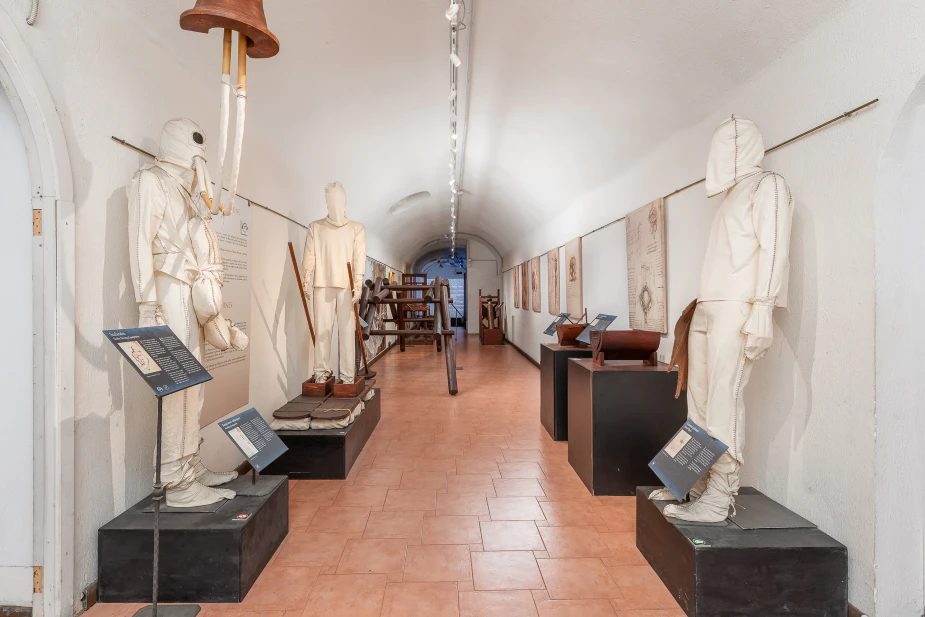
Visit one of Milan’s most fascinating historical monuments and one of Europe’s most significant science and technology museums.
Discover extraordinary objects such as steam trains and the Luna Rossa AC72 catamaran with Leonardo da Vinci Museum tickets.
Explore the space area and witness the only moon fragment visible in Italy and the Vega space launcher.
When you book this popular ticket, look for temporary shows and exhibits on energy, materials, communication, transport, and particle physics.
This ticket also fetches you 10% discount at the museum shop.
Ticket price
Adult Ticket (27 to 64 years): €10
Youth Ticket (18 to 26 years): €7.50
Children Ticket (3 to 17 years): €7.50
Infant Ticket (up to 2 years): Free
Senior Ticket (65+ years): €7.50
1.5-Hour Leonardo da Vinci Gallery Tour
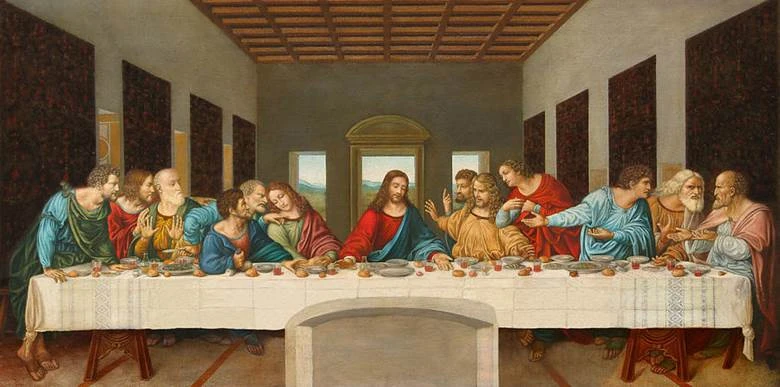
You will learn about Leonardo’s contributions as a scientist, researcher, engineer, naturalist, artist, and philosopher with the local guide during the Leonardo da Vinci Gallery Tour.
With more than 170 historical replicas, artworks, paintings, and installations, you can experience a thorough and fascinating depiction of the Renaissance artist and his environment.
On this 1.5-hour tour, only 15 guests can participate in a group.
While booking tickets, you can select a time slot that fits your schedule.
Ticket Cost: €160 (per group up to 15 people)
Buy This TicketExplore Milan’s famous attractions with a 48-hour Milan Pass. You can see Leonardo 3, Leonardo’s Vineyard, Pinacoteca Ambrosiana, La Scala Museum and Theatre, and many more places with this one pass.
How to reach the Science Museum
The Leonardo da Vinci Museum Milan is between Milan Cathedral and La Scala Opera House in the city’s center.
Address: Via San Vittore, 21, 20123 Milano MI, Italy. Get Directions
There are several ways to get to the Leonardo Da Vinci Museum, including metro, bus, railway, tram, and car.
By Metro
You can reach the Leonardo da Vinci Science and Technology Museum by taking metro M2 (green) to the S. Ambrogio subway station 300 meters away.
By Railway
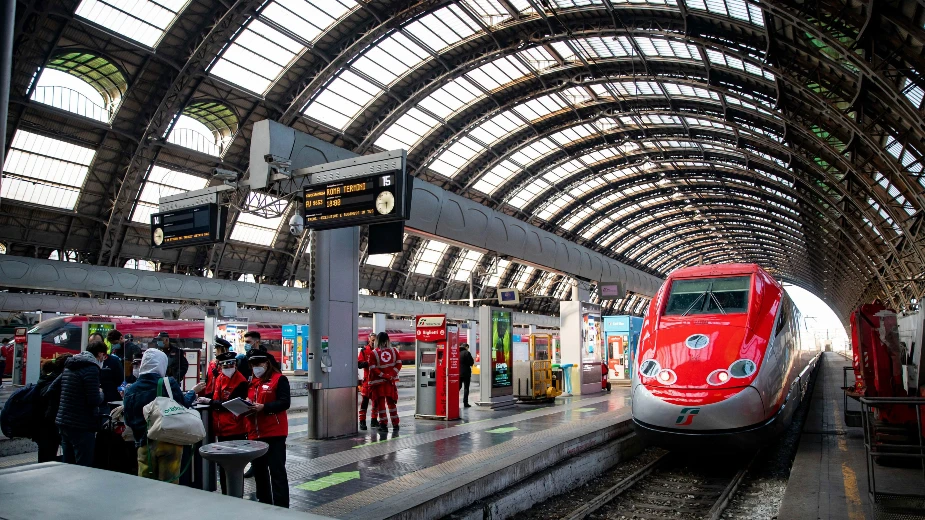
If you are near Milano Centrale Railway Station or Milano Porta Garibaldi, take metro M2 to the S. Ambrogio subway station.
If you’re coming from Milano Cadorna train station, head to Cadorna subway station (hardly a minute walk away) and take the M2 green line, which will drop you at S. Ambrogio.
By Tram
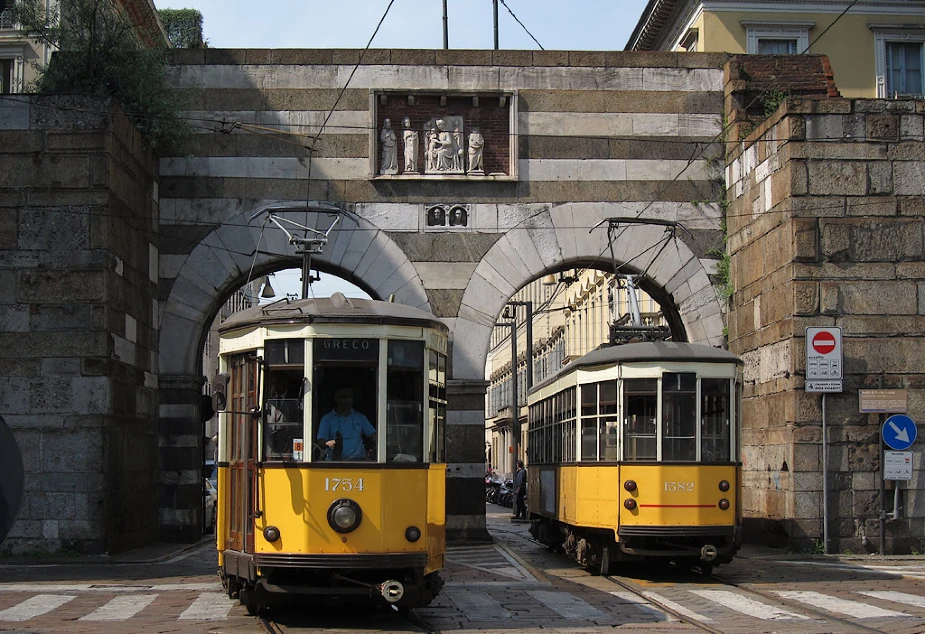
Another way to reach the Leonardo da Vinci Museum of Science and Technology is by tram.
You can take the tram line 10 to V.le S. Michele del Carso P.za De Meis tram stop, an 8-minute walk from the Leonardo da Vinci National Museum of Science and Technology.
Tram line 10 is also available at V.le Coni Zugna Via Foppa tram stop, so you can get down here and walk 700 meters to the museum.
By Bus
You can take Bus 58 and get down at Museo Della Scienza E Della Tecnologia (a 1-minute walk from the museum) or Via S. Vittore Via De Togni bus stop (110 meters from the museum).
You can get down at V.le di P.ta Vercellina Via S. Vittore bus station (Available buses: 50, 58, and 68) or V.le S. Michele del Carso P.za De Meis bus stop (Available buses: 50 and 58).
If traveling by N26 or NM2 bus, you can get down at the P.le Aquileia bus stop and walk 750 meters to reach the National Museum of Science and Technology, Leonardo da Vinci.
By Car
If you’re traveling by car to the Leonardo da Vinci National Museum of Science and Technology, turn on your Google Maps and get started!
Parcheggio Carducci parking offers convenient parking close to the museum.
There are numerous parking lots around the museum
Leonardo da Vinci Museum timings
The National Museum of Science and Technology Leonardo da Vinci is open from Tuesday to Sunday, and its timings vary in summer and winter.
During winter (September to June), the Leonardo da Vinci National Museum of Science and Technology opens at 9.30 am and closes at 5 pm from Tuesday to Friday.
The opening time for the Museum is the same (i.e., 9.30 am) on Saturday and Sunday in winter, but the closing time is 6.30 pm.
During Summer (June to September), the Museum of Science and Technology Leonardo da Vinci opens at 10 am and closes at 6 pm from Tuesday to Friday.
The opening time for the Museum is the same on Saturdays and holidays in summer (i.e., 10 am), but the closing time is 7 pm.
The last entry is one hour before closing.
It is closed on Mondays, 24 December, 25 December, and 1 January.
How long does da Vinci Museum take
Tourists take two to three hours to explore exhibits and activities at the Leonardo da Vinci’s National Museum of Science and Technology in Milan.
Your stay at the museum may extend if you are visiting with kids.
Best time to visit Leonardo da Vinci Museum
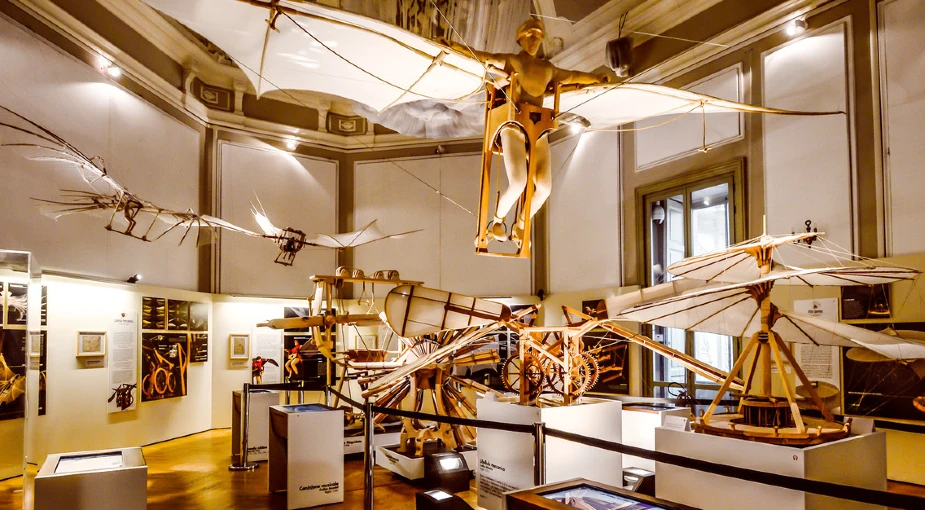
It is best to visit Leonardo’s National Museum of Science and Technology when it opens for the day at 9.30 am or 10 am.
If you have pre-purchased Leonardo da Vinci Science and Technology Museum tickets, getting there early will let you avoid the huge lines at the ticket offices and the security check.
Highlights of Leonardo da Vinci Museum
The National Museum of Science and Technology Leonardo da Vinci has various exhibits and interactive seminars for people of all ages.
Enrico Toti Submarine
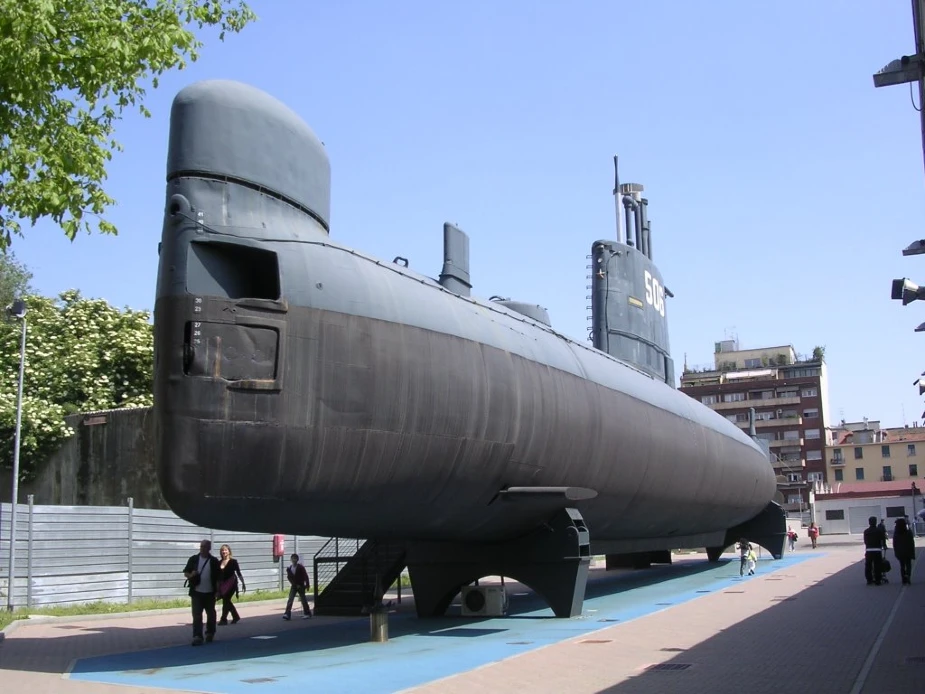
Enrico Toti Submarine is the most interesting collection at the Leonardo da Vinci Science and Technology Museum.
Enrico Toti Submarine is Italy’s first submarine planned and built since World War II.
So, whenever you visit the National Museum of Science and Technology, Leonardo da Vinci aboard the Enrico Toti submarine to see how sailors used to live.
Steam Engine GR 691-022 FS
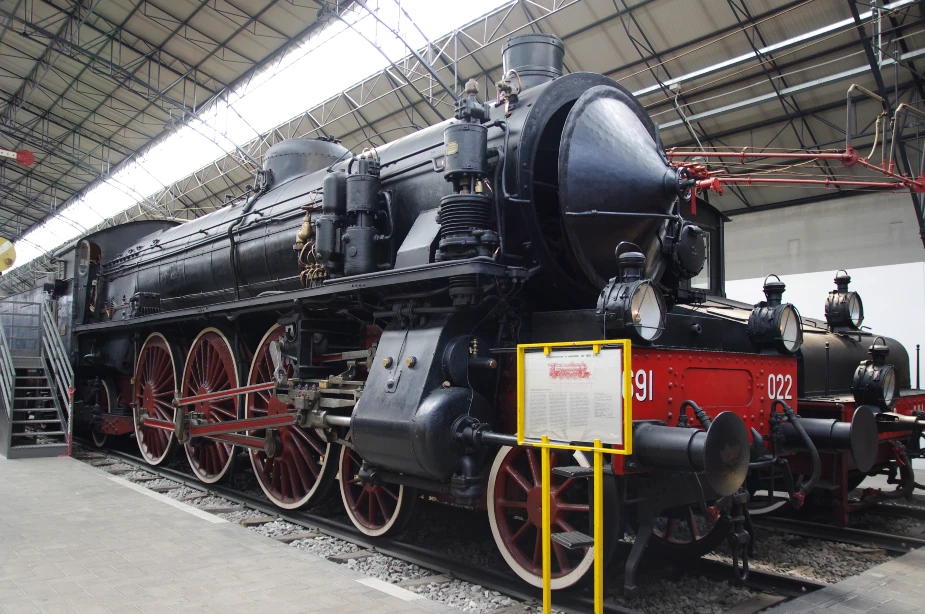
Come and see the last-existing locomotive of a group of 33 used until the late 1950s at the Leonardo da Vinci National Museum of Science and Technology.
Steam Engine GR 691-022 FS was the fastest locomotive built in Italy to enhance passenger service on significant national lines.
Vega Launcher
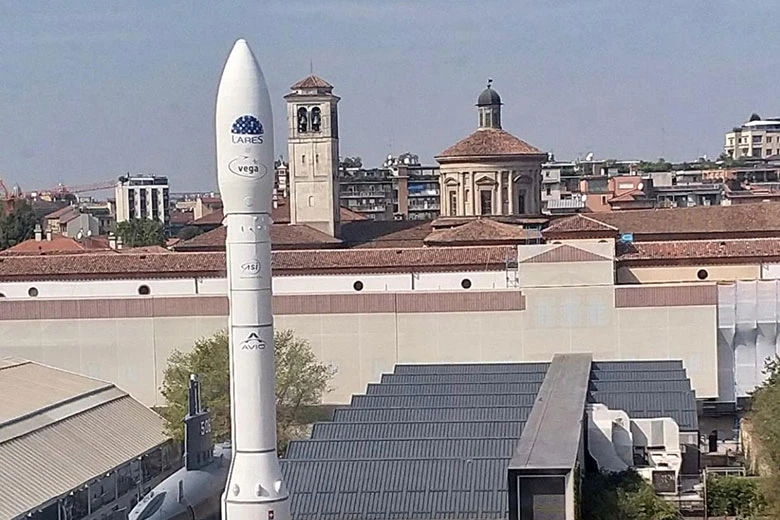
A 1:1 scale model of the first vector from the European Space Agency, the Vega (VV01), is displayed in the Leonardo da Vinci Science and Technology Museum.
Vega Launcher has four stages, is about 30 meters tall, weighs 137 tonnes, and can launch and move satellites up to 2,000 kg.
Vega is part of the Space exhibition, although it is located in external areas due to its size.
Ebe Schooner
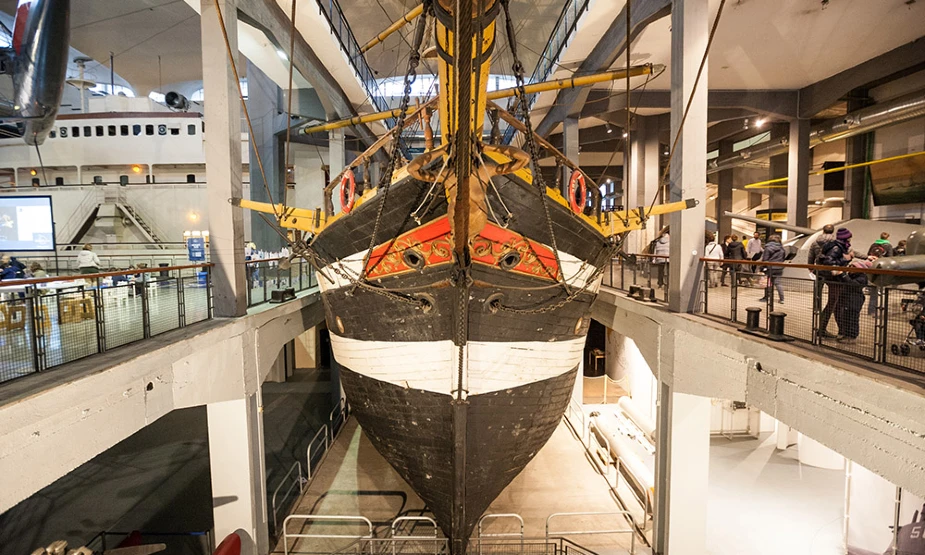
The Ebe was built in 1921 to transport cargo across the Mediterranean.
In the 1950s, Ebe Schooner was converted into a pilot training ship.
Ebe Schooner is one of the most massive ships preserved at a museum.
Stassano Furnace
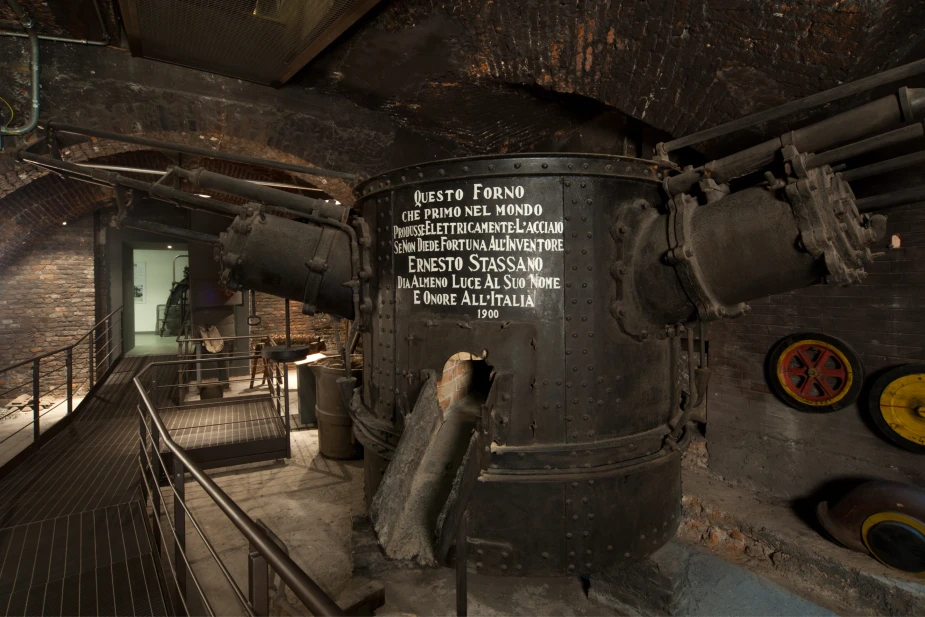
You can find the rarest object at the National Museum of Science and Technology, Leonardo da Vinci, which is difficult to find in Europe.
Stassano Furnace is the world’s first electric indirect arc steel furnace.
Stassano Furnace was invented in 1898 and was awarded the “Milestone in the Development of Metallurgy” honor in 1992.
Filippo Brunelleschi’s Counterweight Crane
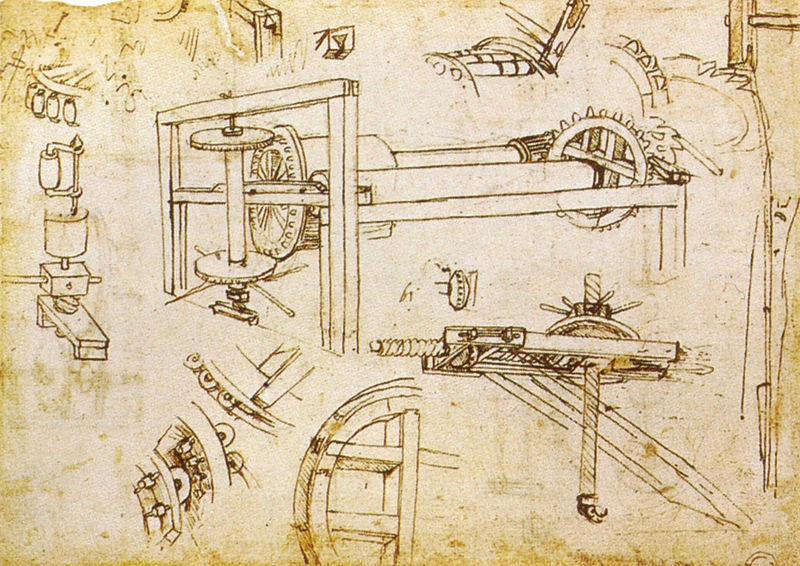
The National Museum of Science and Technology Leonardo da Vinci also houses Fillipo Brunelleschi’s (founding father of Renaissance architecture) crane with a counterweight used at the construction sites in Milan and Florence to speed up the work.
Krechet Soviet Space Suit

The Krechet Soviet Space Suit is one of the most important things in astronautics history, a very rare testament to the Soviet mission to send a man to the Moon.
The surviving Krechet Soviet Space Suit is a visible reminder of the Soviet Union’s unsuccessful attempt (sending a man to the Moon).
Telephones
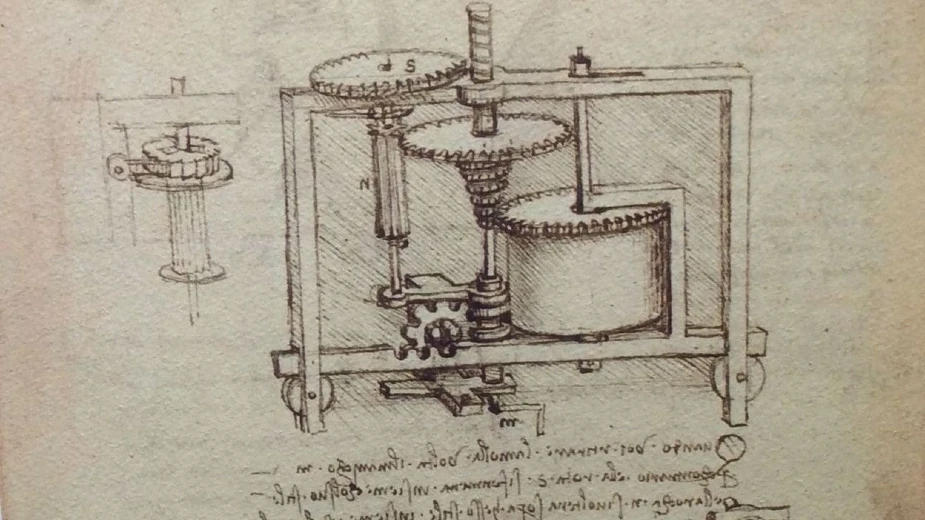
Telephones from the late 1800s can be seen at the Leonardo da Vinci National Museum of Science and Technology.
Moon Rock
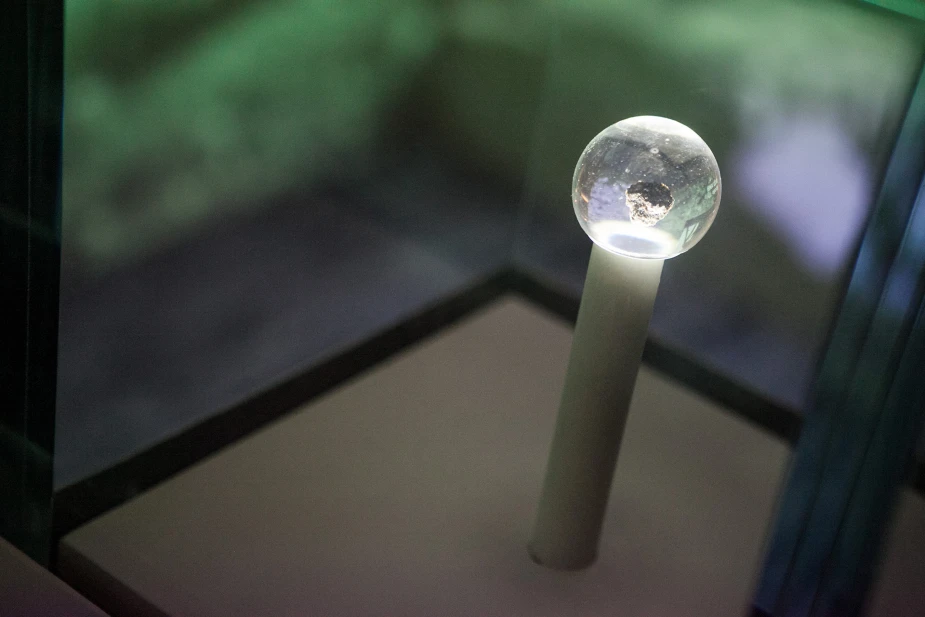
Moon Rock is a piece of the Goodwill Rock, collected in 1972 by the astronauts of Apollo 17, the last human mission to the Moon.
Moon Rock is a significant rock, the most recognizable symbol of humanity’s passion for exploration and scientific and technological challenges.
Synoptic Panel
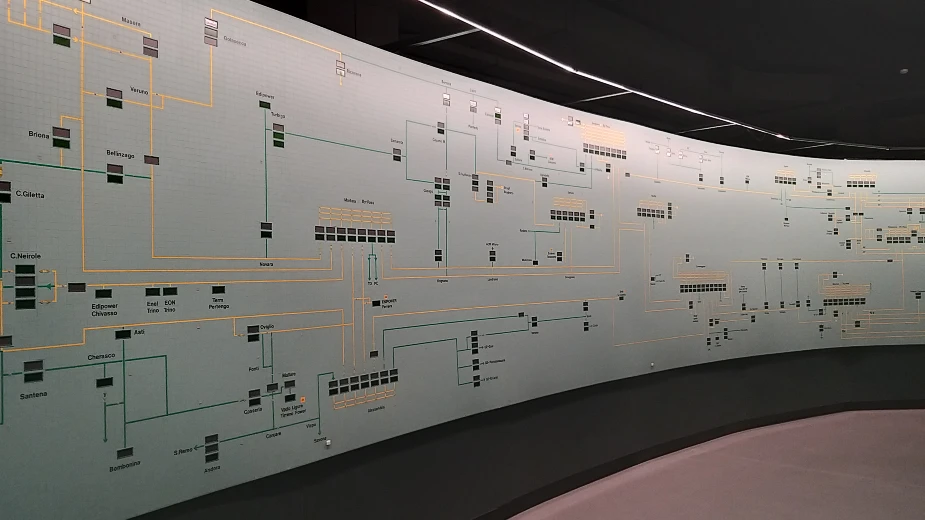
The synoptic panel is an electronic device used in the Operations Room of the Snam Dispatching Centre to monitor the Italian gas transport network constantly.
A Synoptic panel is essential for successful and balanced transportation management to avoid critical situations.
Olivetti Programma 101
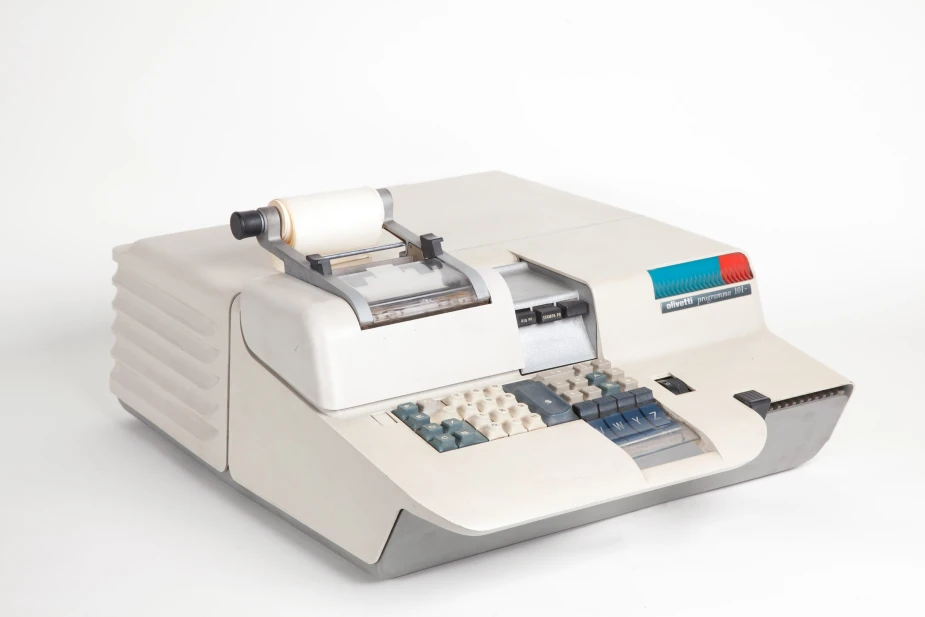
Olivetti developed the P101 programmable calculator between 1965 and 1971.
At the time, only massive, expensive electronic processors could perform such duties.
NASA utilized the P101 to compute the Moon mission.
Guglielmo Marconi’s magnetic detector
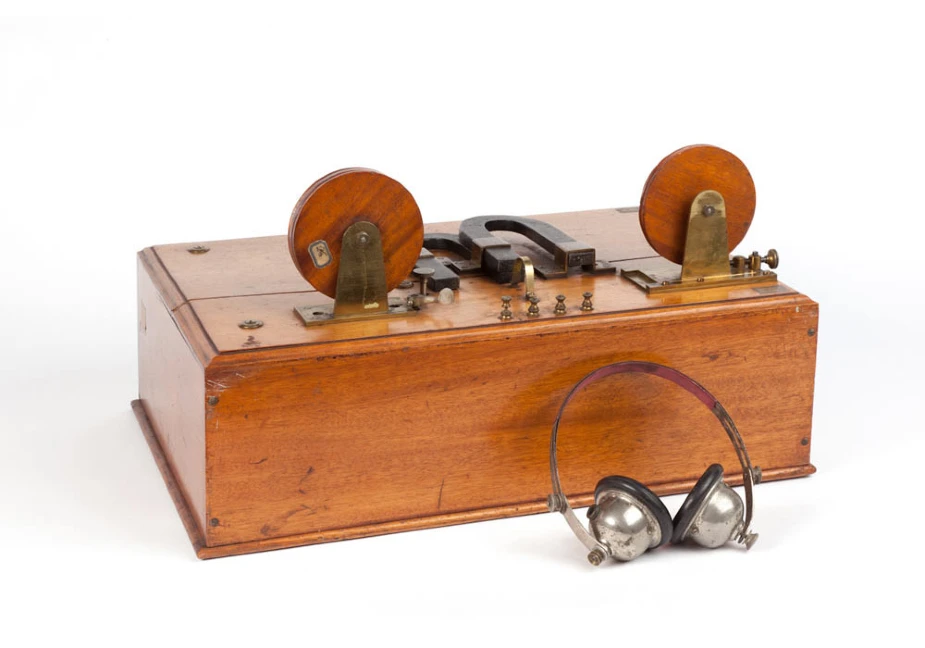
Guglielmo Marconi used this original magnetic detector prototype in his electromagnetic wave experiments.
Guglielmo Marconi’s magnetic detector was the first radio receiver in history to be capable of receiving radio waves over long distances.
Regina Margherita Thermoelectric Plant
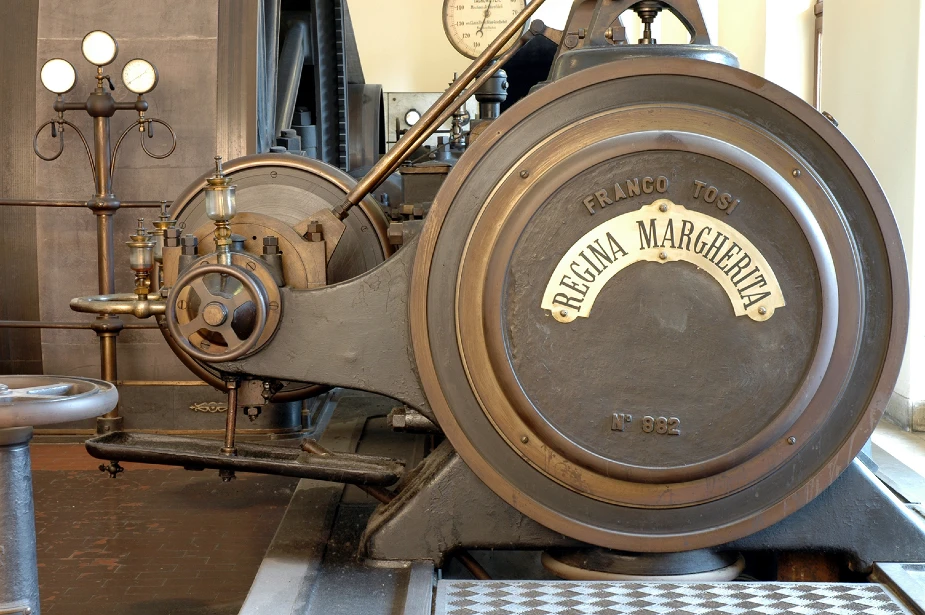
The Regina Margherita thermal power station was a major power plant for electricity production. It was restored at the Museo nazionale della scienza e della tecnologia Leonardo da Vinci in Milan, Italy.
Conte Biancamano ocean liner
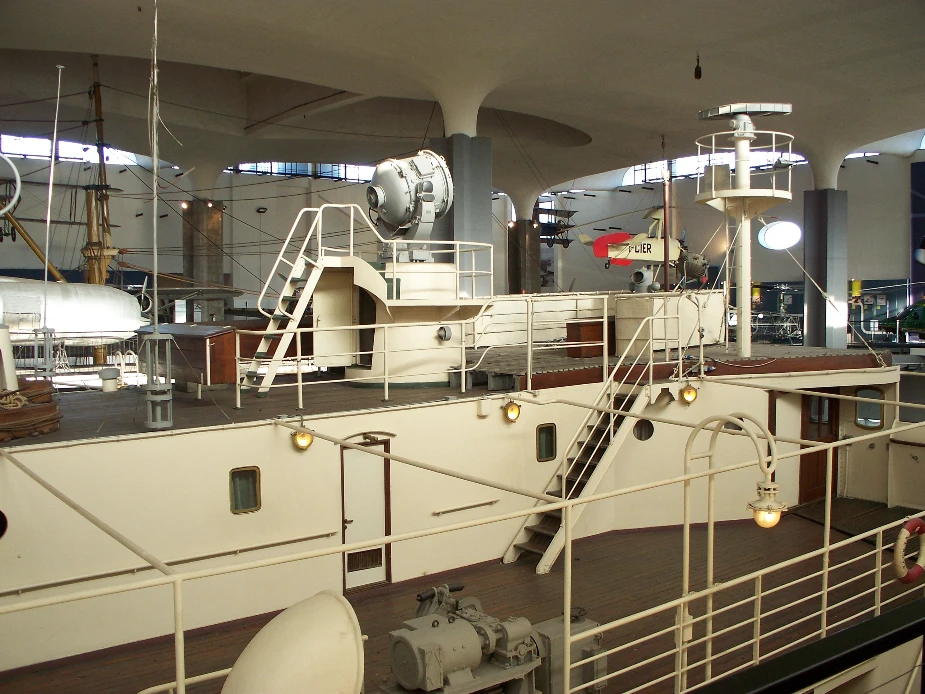
Dive into history: the illustrious launch in Scotland in 1925, the first voyage on the Genoa-Naples-New York route, trips to South America and the Far East, transport of US troops during WWII, and the final excursions.
During the 1960s disarmament period, the Museum purchased the ballroom and bridge, the original equipment, and a few cabins.
Giovanni V. Schiaparelli’s Merz-Repsold Telescope
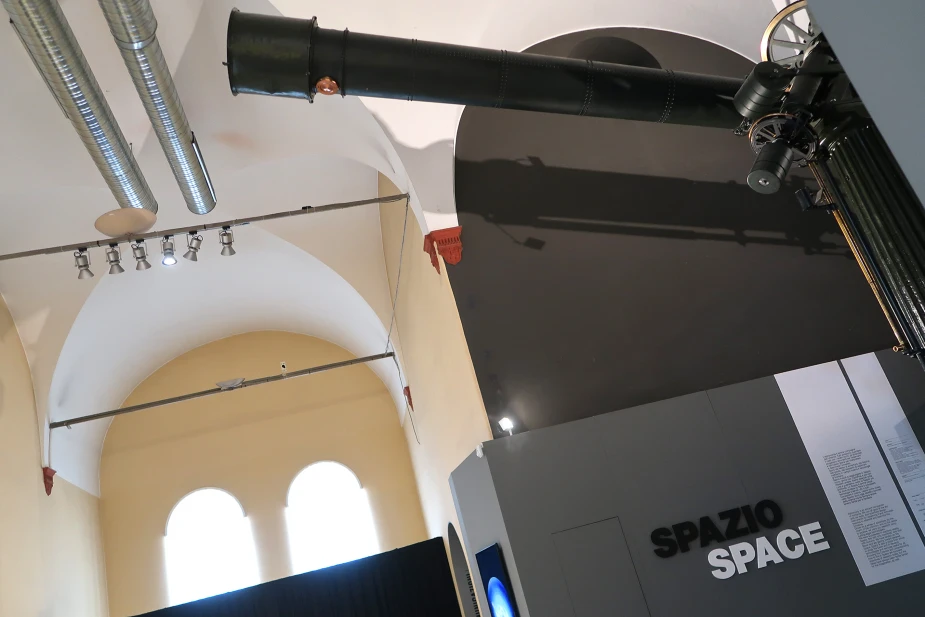
The Merz-Repsold telescope was the largest in Italy and one of the most important in the world when it was installed at the Brera Astronomical Observatory in Milan in 1886.
Schiaparelli used this technology to perform his research on Mars.
Detector UA1
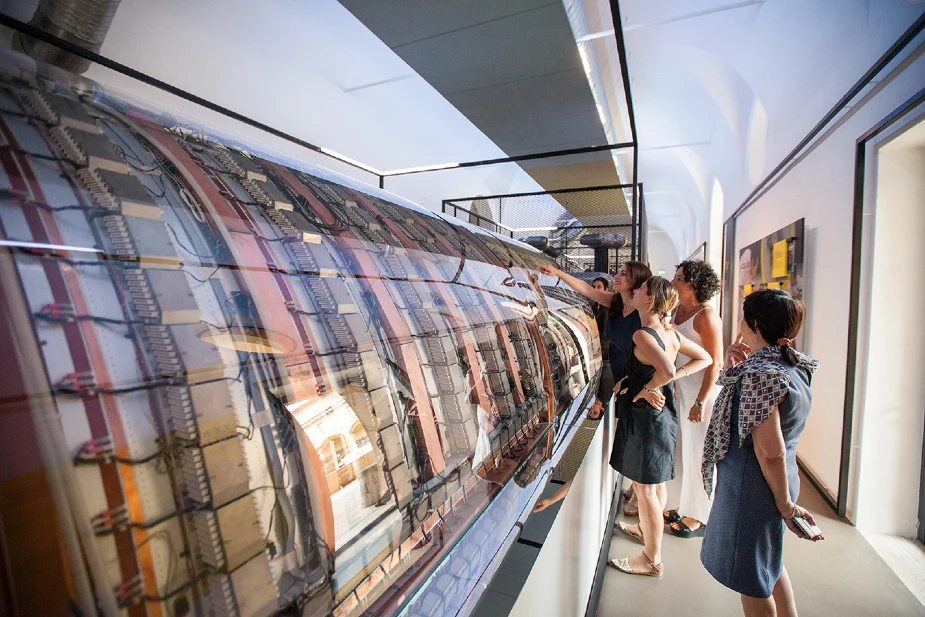
The UA1 experiment, also known as Underground Area Experiment One, proved the existence of the elementary particles W and Z in 1983.
Carlo Rubbia and Simon van der Meer won the Nobel prize for this important discovery.
Elea 9003
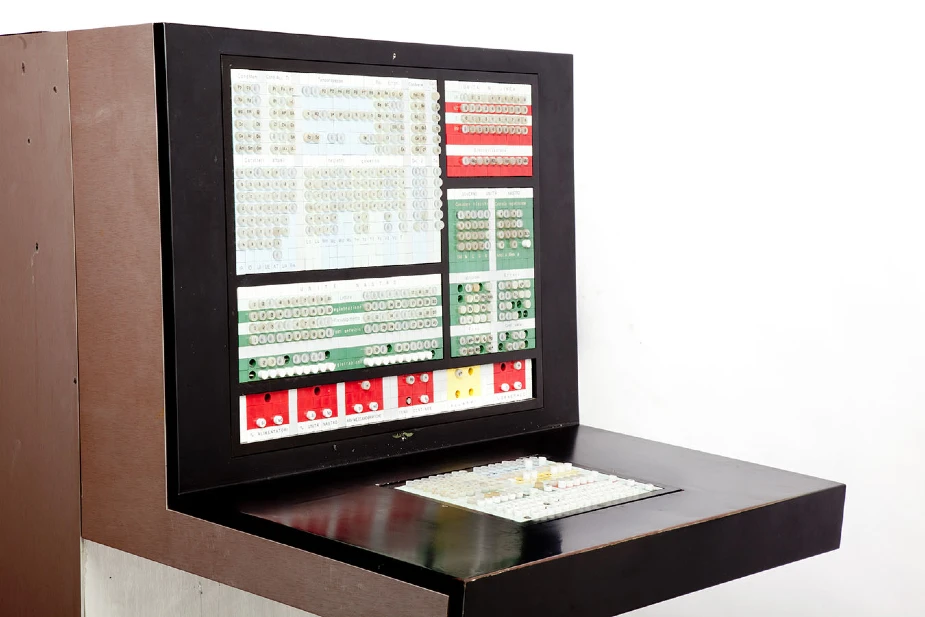
Olivetti engineers worked on the ELEA 9003, the first transistor computer used for business reasons, under Mario Tchou’s supervision.
ELEA was the first gadget with an ergonomic interface, easily accessible controls, and the ideal balance of form and function.
The project’s creator, Ettore Sottsass, received the Compasso d’Oro design honor in 1959.
Enrico Forlanini’s experimental helicopter
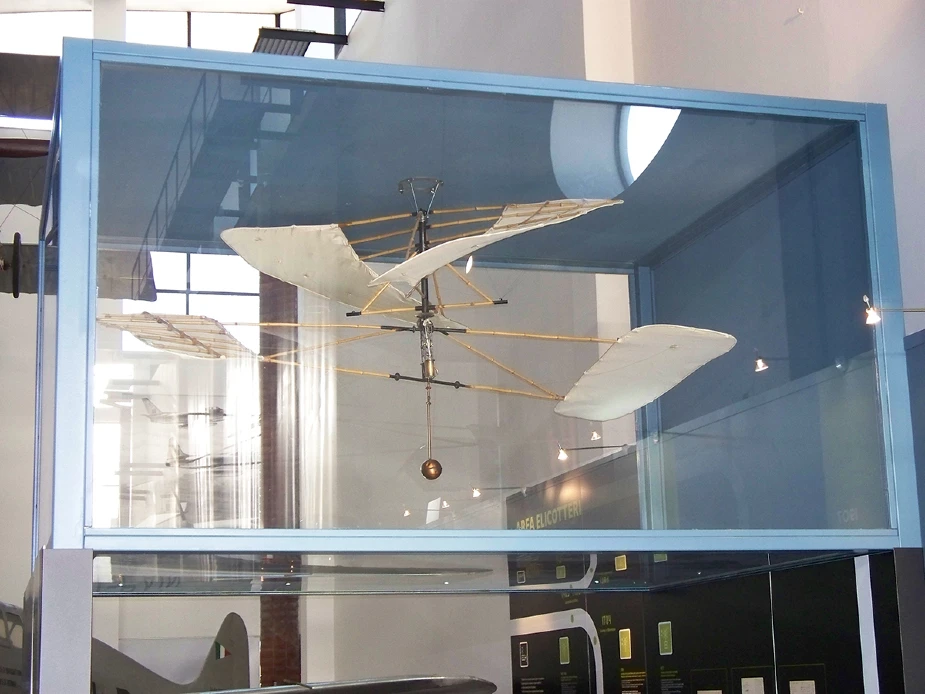
The first thing to fly using engine thrust was Enrico Forlanini’s experimental helicopter.
You can view Enrico Forlanini’s experimental helicopter as powered by a light steam engine, two counter-rotating propellers mounted on the same axis, and without a pilot at the Leonardo da Vinci National Museum of Science and Technology.
Continuus Properzi
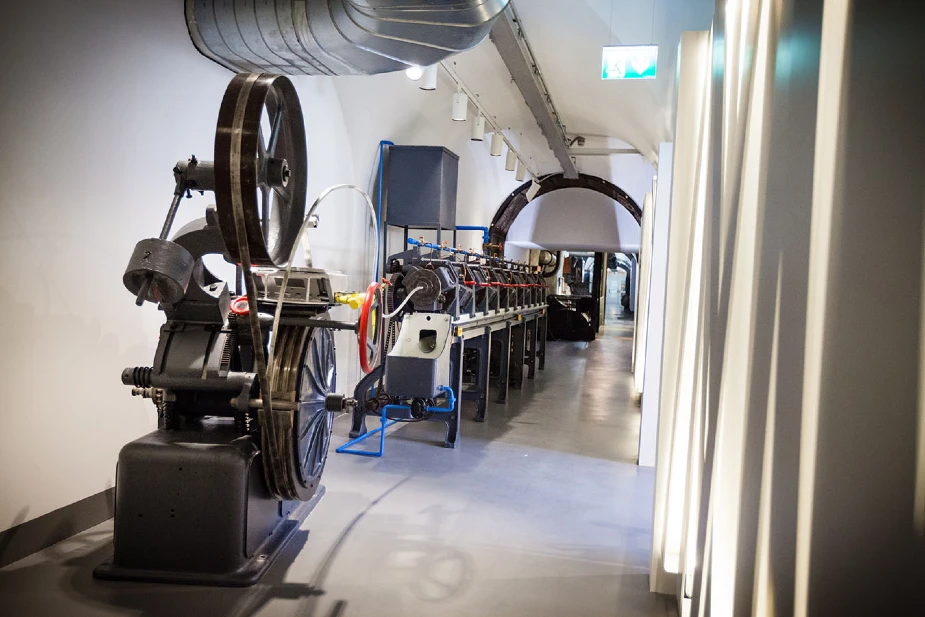
For many years, casting metal into bars or plates, which were then moved, cooled, warmed, and finally molded, was used to create semi-finished metal products.
Even a small amount of goods daily requires time, space, water, and energy.
Ilario Properzi patented the Continuus Properzi in 1948, allowing it to create kilograms of rods quickly using just one machine and cast metal.
Macchi MC, 205 V
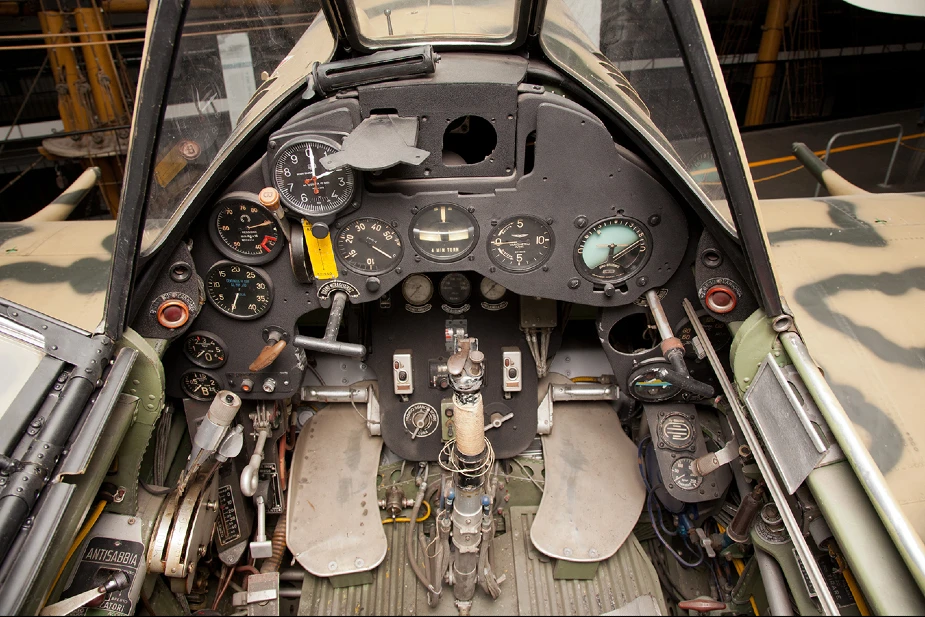
One of the most beautiful and practical aircraft from the Second World War is the Macchi MC 205 Veltro, which entered service in 1943 and is kept at the National Museum of Science and Technology by Leonardo da Vinci.
Macchi MC 205 V possessed two machine guns, two cannons, and a 1475 cc engine.
FAQs about Leonardo da Vinci Museum of Science and Technology
Here are some frequently asked questions about the Leonardo da Vinci Museum of Science and Technology-
What are the ticket prices for the Leonardo da Vinci Museum of Science and Technology?
Leonardo da Vinci Museum ticket prices may vary depending on age, student status, and special exhibitions. The tickets cost €10 for all visitors aged 27 to 64; young visitors aged 18 to 26 and children aged 3 to 17 get a €2.5 discount and pay only €7.50. The tickets for seniors over 65 years are also priced at €7.50. Infants up to 2 years can enter the museum for free.
Can I purchase tickets for the Leonardo da Vinci Museum of Science and Technology in advance online?
The museum allows visitors to purchase tickets for the Leonardo da Vinci Museum online or at the box office at the entrance gate. Booking tickets online may offer convenience, especially during peak seasons or for popular exhibitions. We recommend the same to avoid last-minute disappointment at the museum entrance.
Is there a specific time slot for entry with the ticket?
The Leonardo da Vinci Museum has designated time slots for ticket holders to manage crowds effectively. We recommend checking whether your ticket has a specific entry time or if it allows entry throughout the museum’s operating hours.
Can I get a refund or exchange my ticket if my plans change?
The ticket offers free cancellation up to 24 hours in advance for a full refund.
Is the Leonardo da Vinci Museum of Science and Technology wheelchair accessible?
The museum has ramps, elevators, and accessible pathways to accommodate visitors using wheelchairs or mobility aids. There are generally accessible entrances and routes throughout the museum, allowing individuals with disabilities to navigate the exhibits comfortably.
